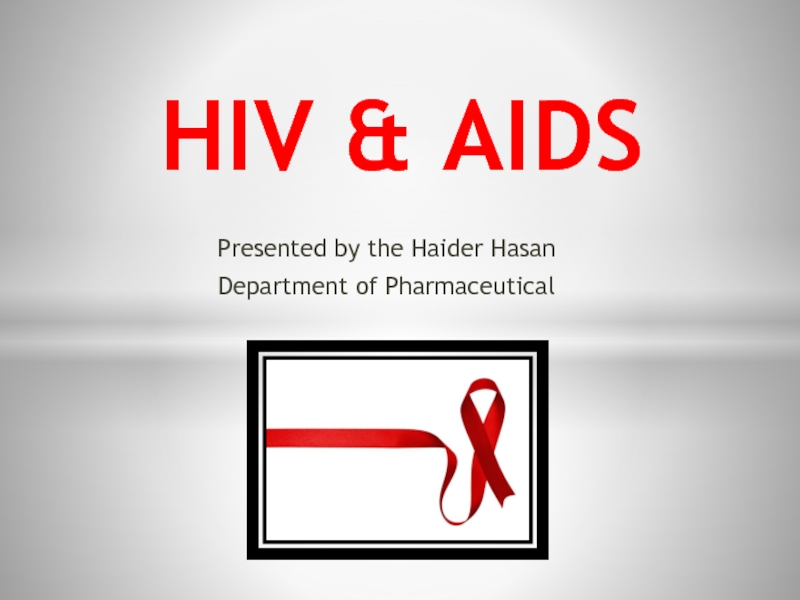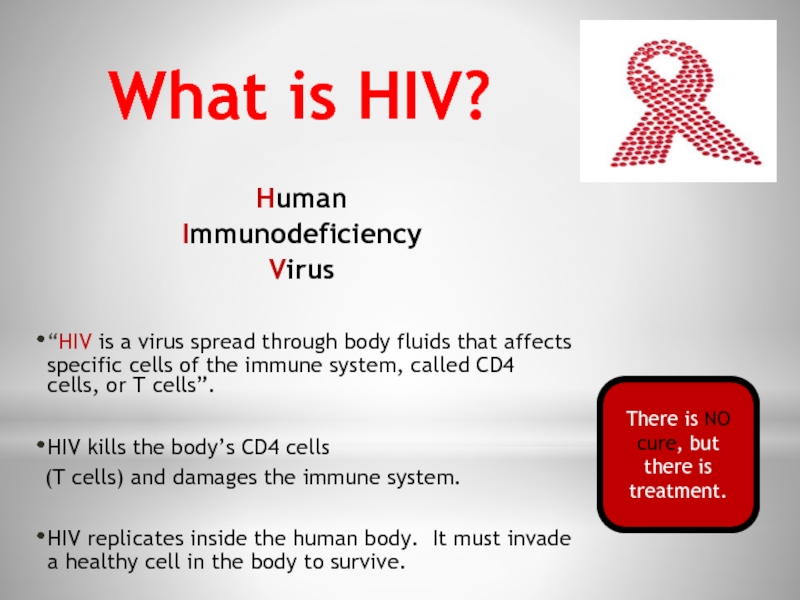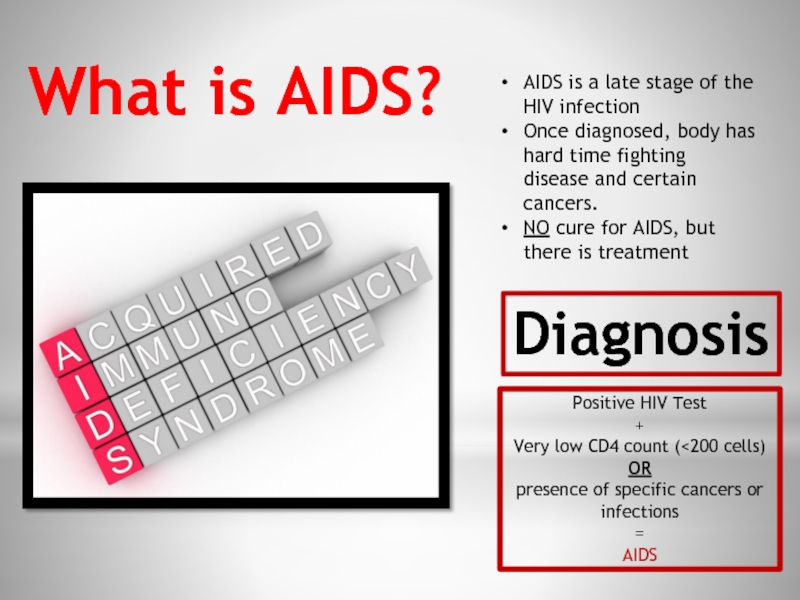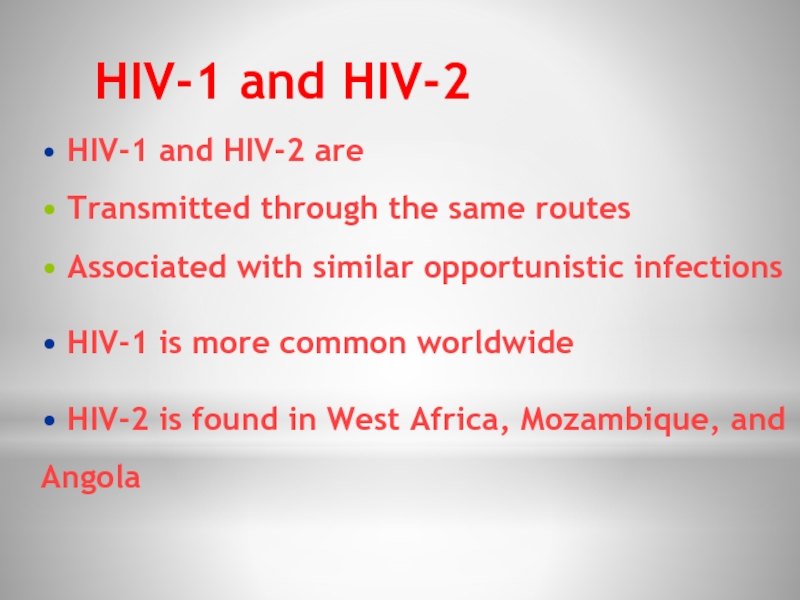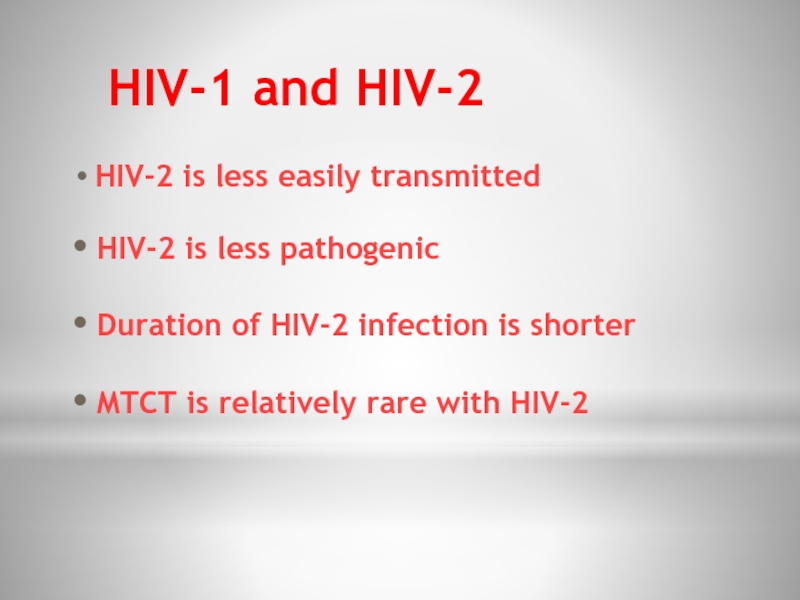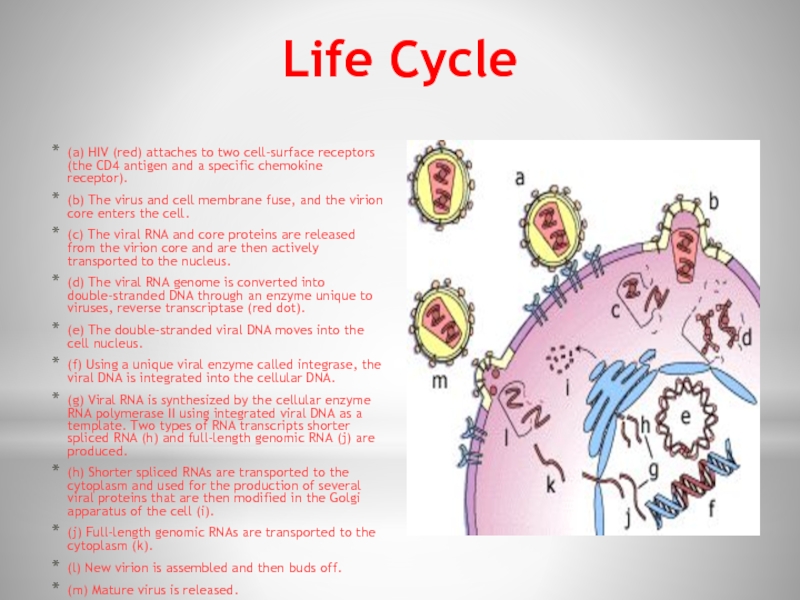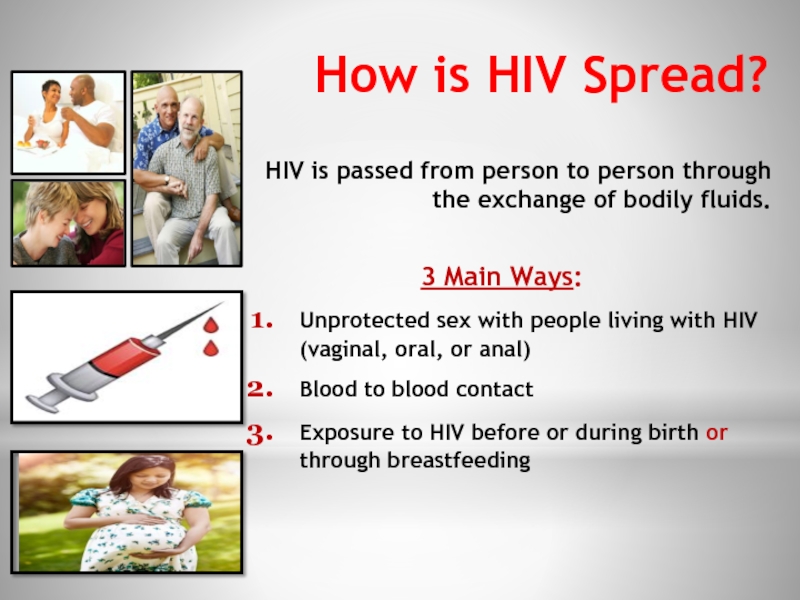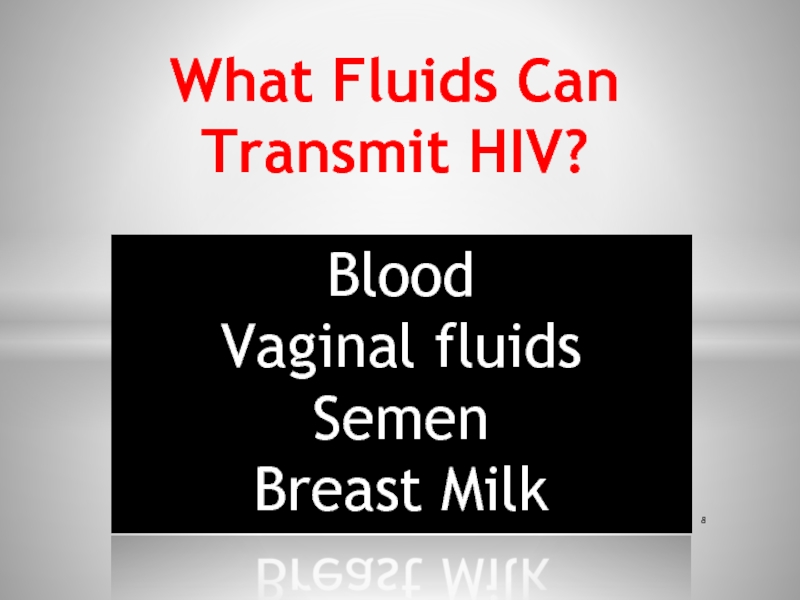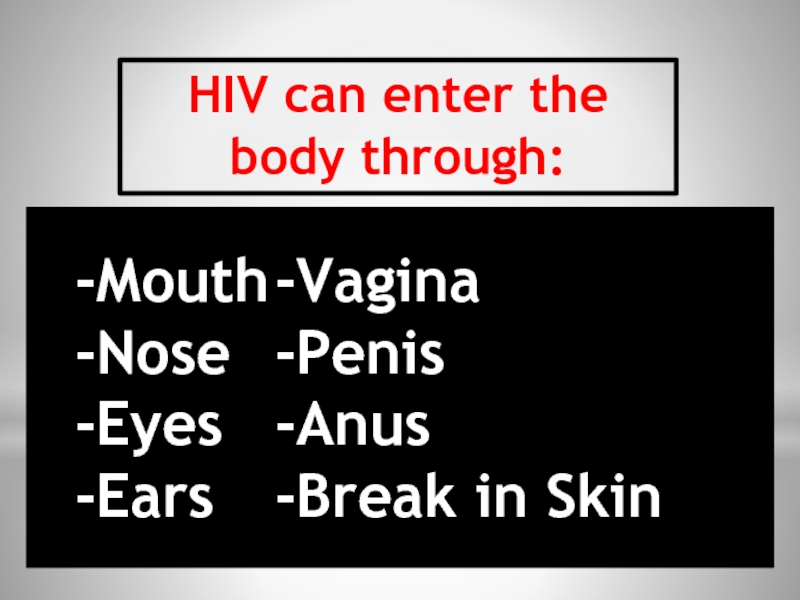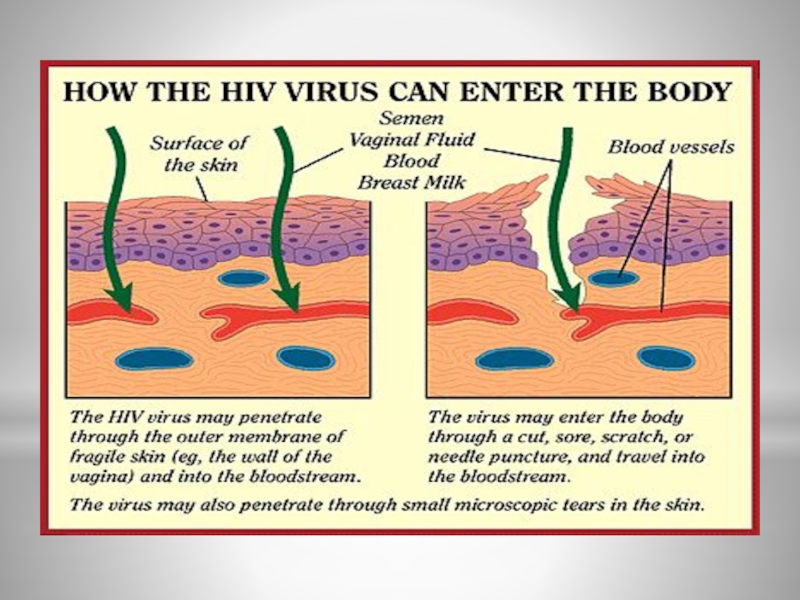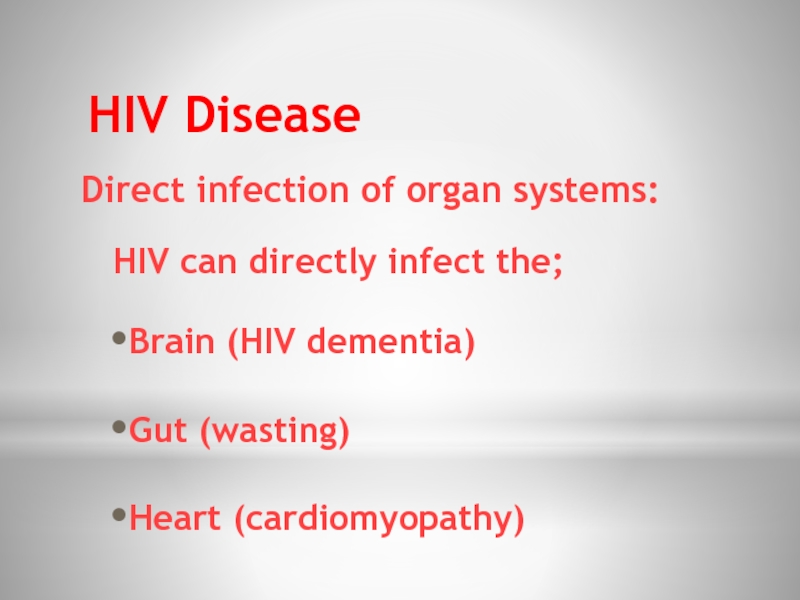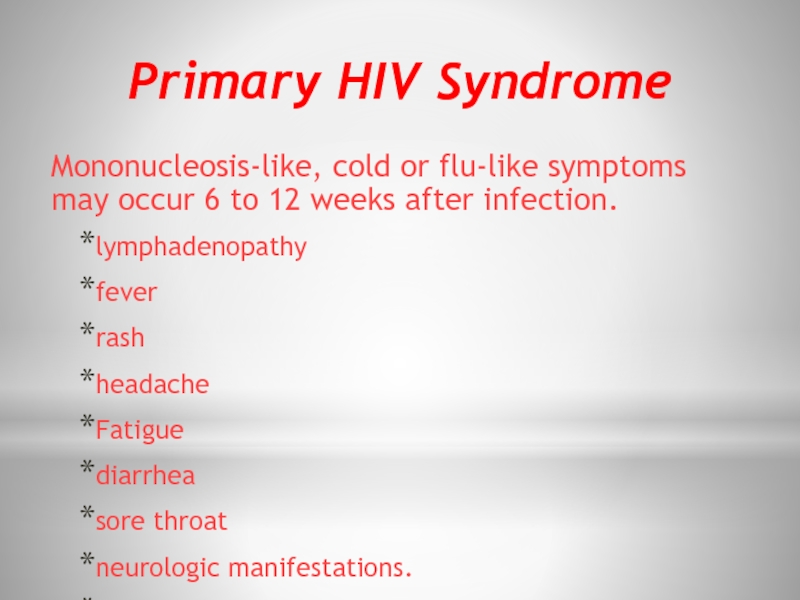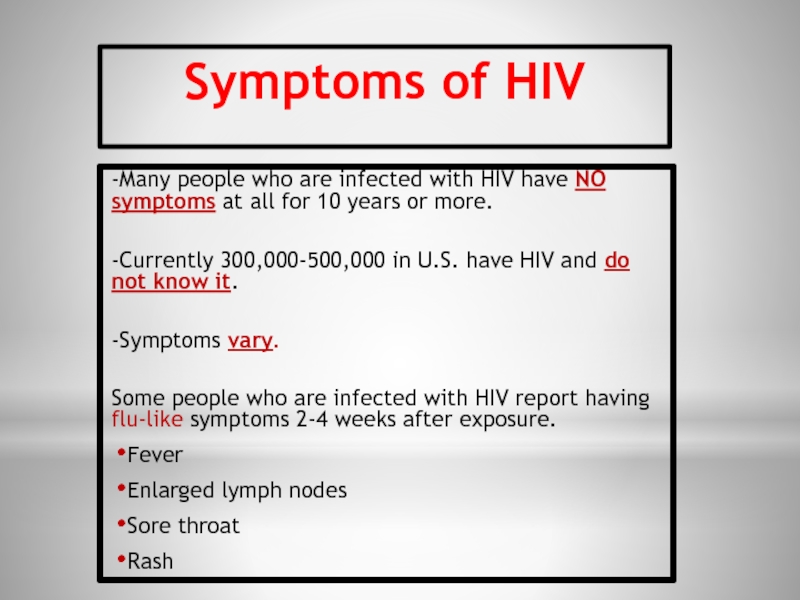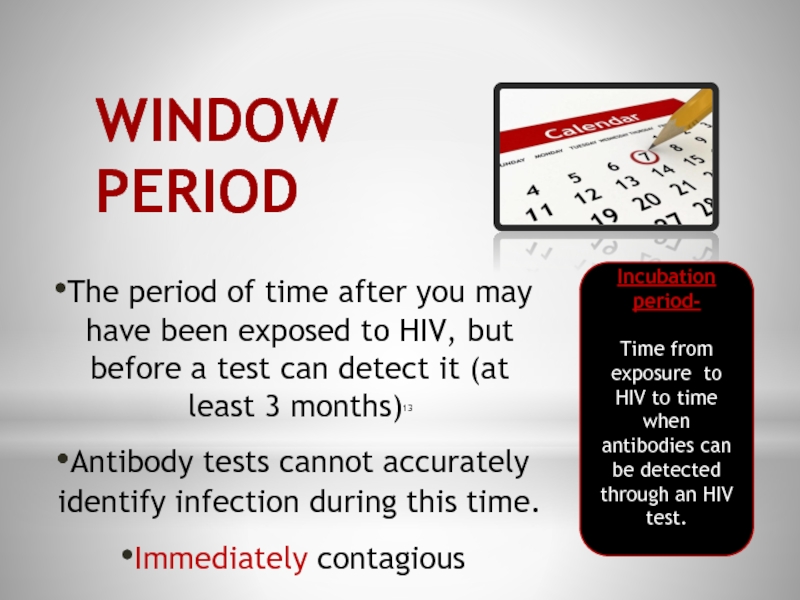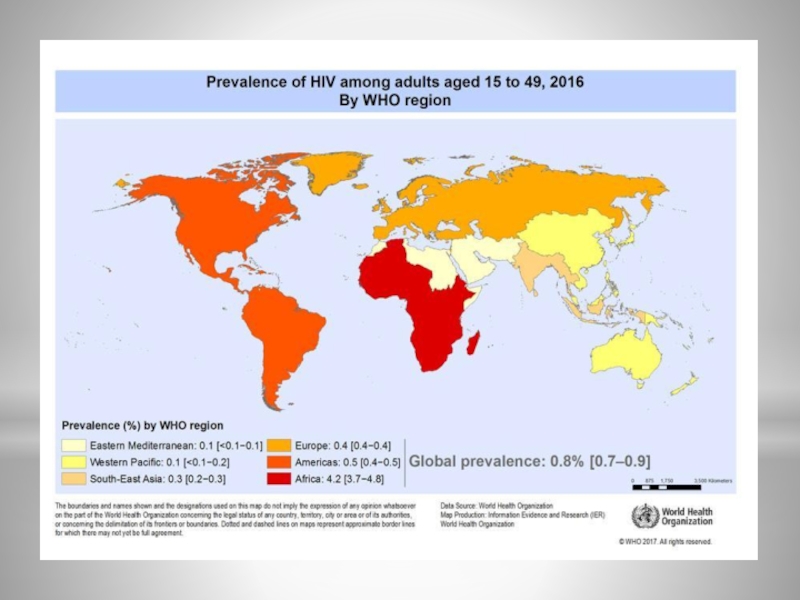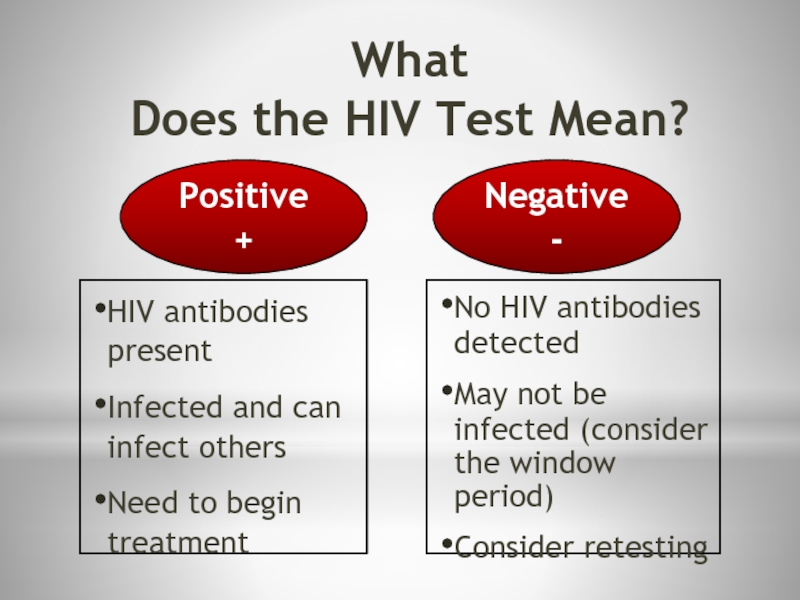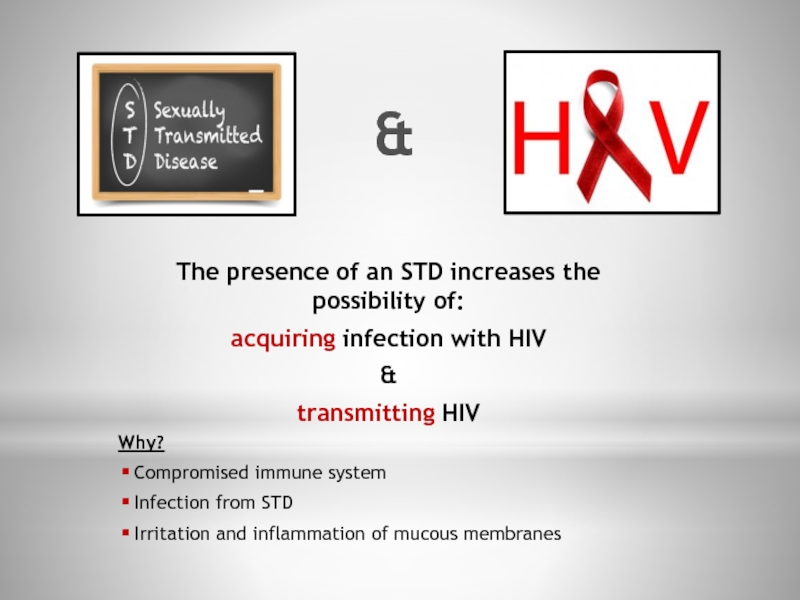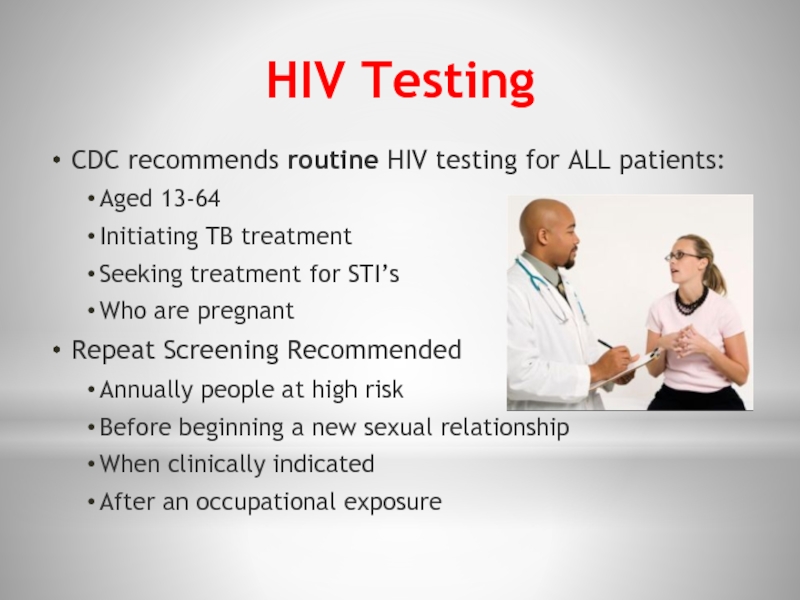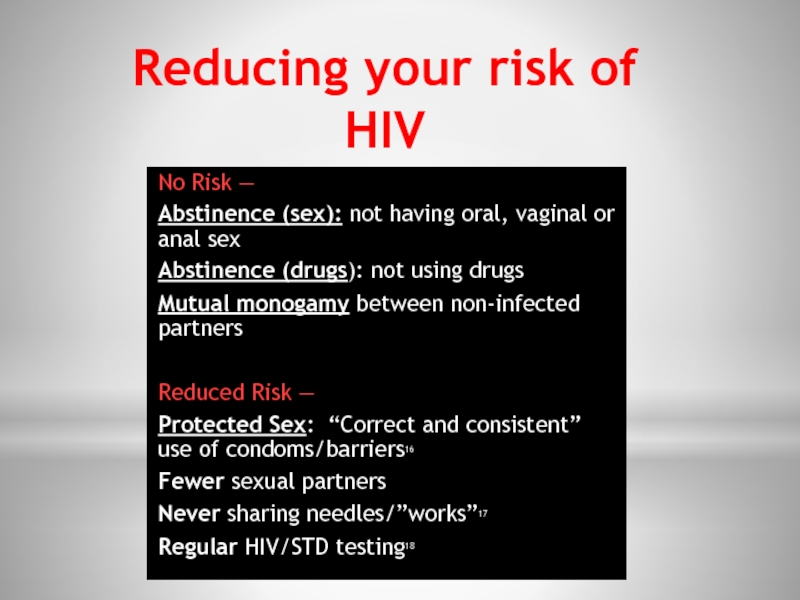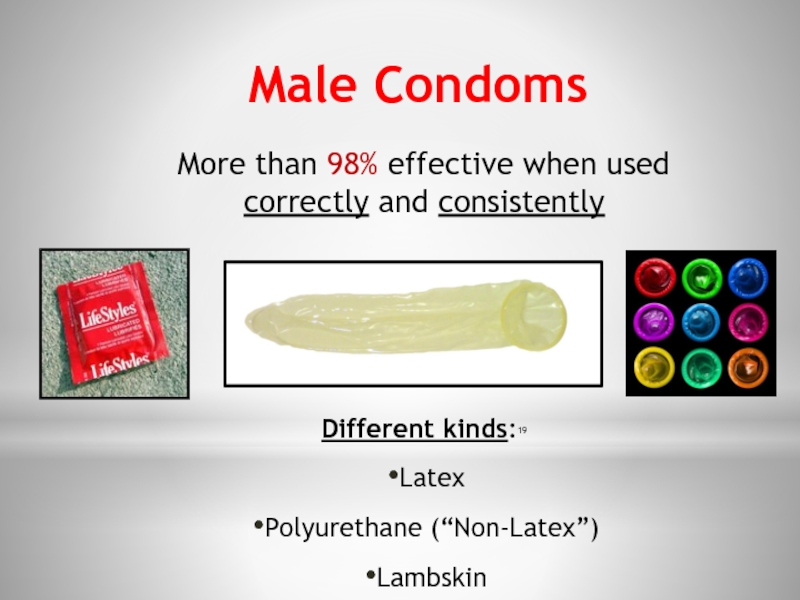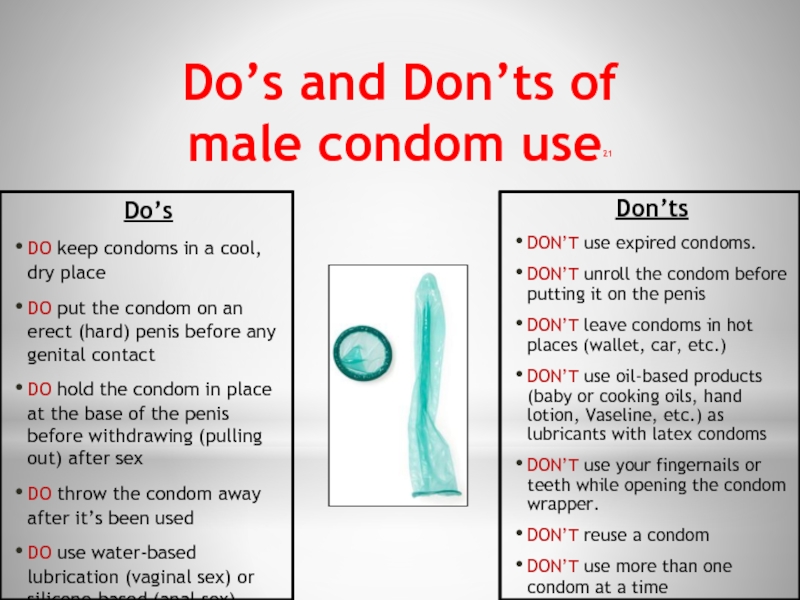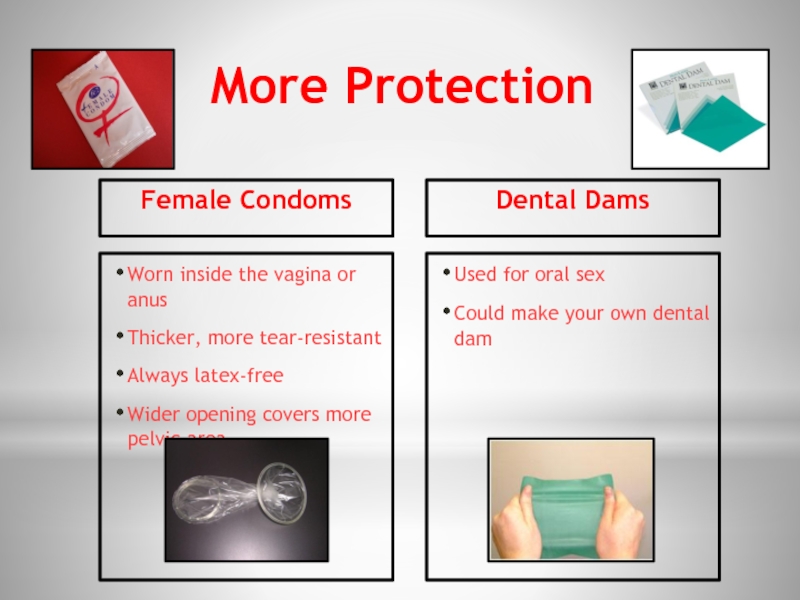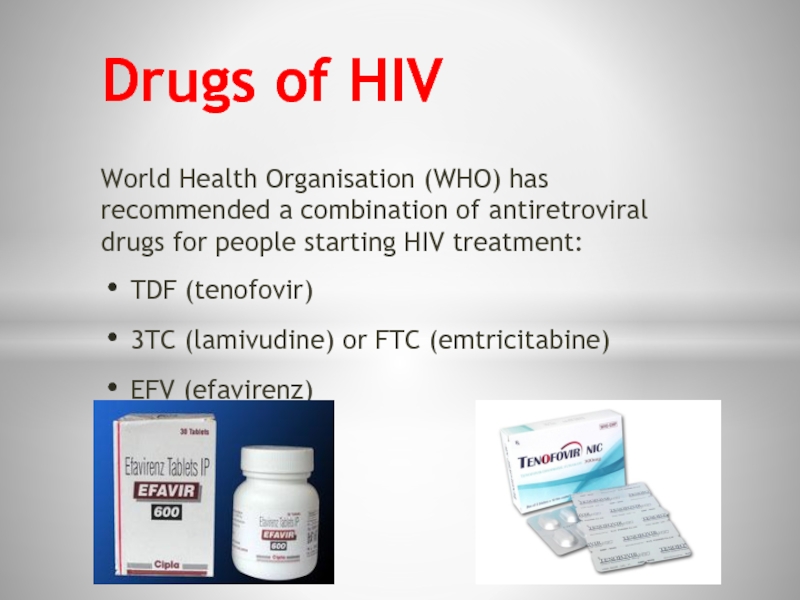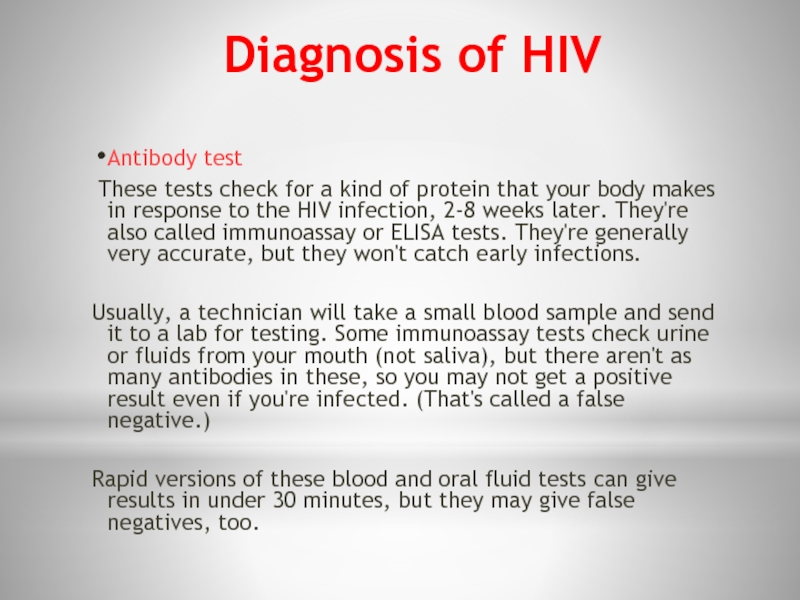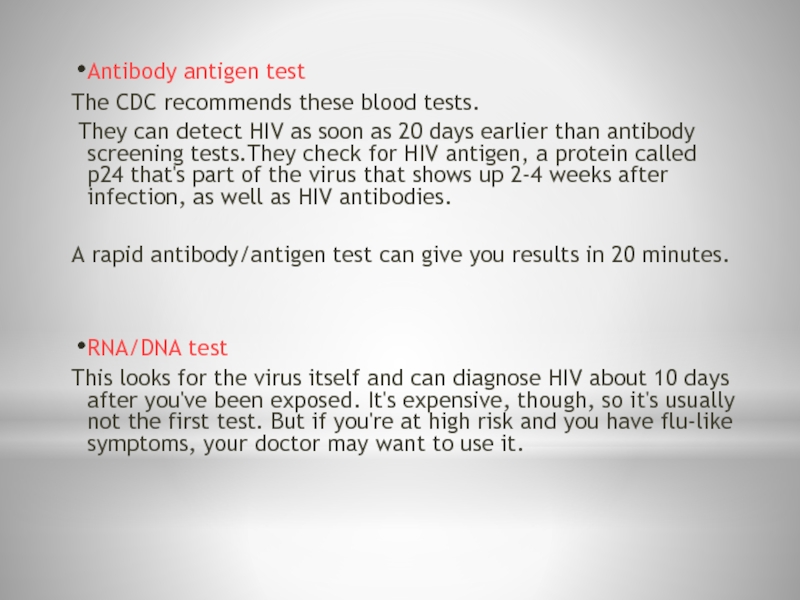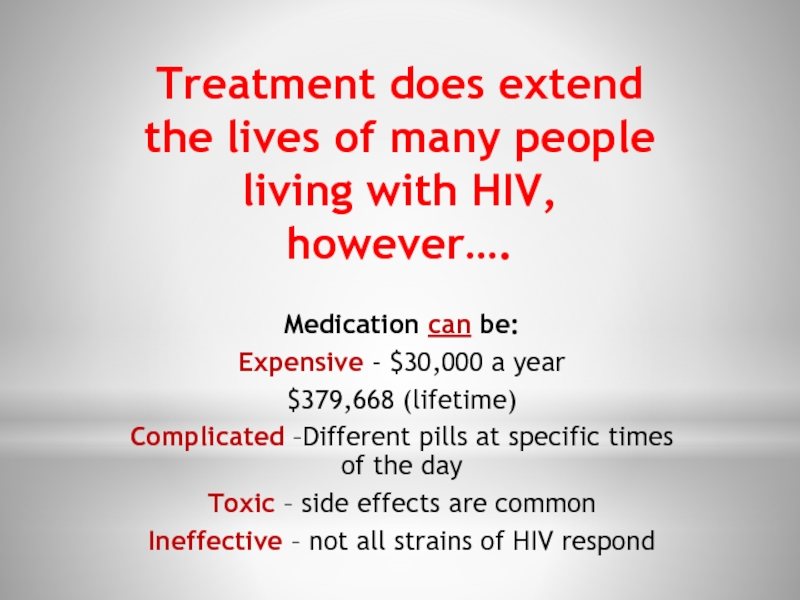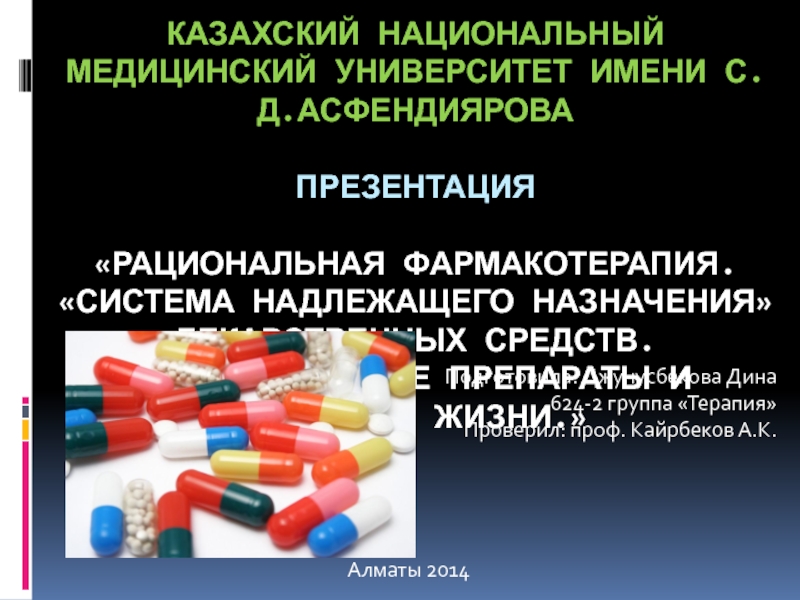- Главная
- Разное
- Дизайн
- Бизнес и предпринимательство
- Аналитика
- Образование
- Развлечения
- Красота и здоровье
- Финансы
- Государство
- Путешествия
- Спорт
- Недвижимость
- Армия
- Графика
- Культурология
- Еда и кулинария
- Лингвистика
- Английский язык
- Астрономия
- Алгебра
- Биология
- География
- Детские презентации
- Информатика
- История
- Литература
- Маркетинг
- Математика
- Медицина
- Менеджмент
- Музыка
- МХК
- Немецкий язык
- ОБЖ
- Обществознание
- Окружающий мир
- Педагогика
- Русский язык
- Технология
- Физика
- Философия
- Химия
- Шаблоны, картинки для презентаций
- Экология
- Экономика
- Юриспруденция
HIV-1 and HIV-2. Human Immunodeficiency Virus презентация
Содержание
- 1. HIV-1 and HIV-2. Human Immunodeficiency Virus
- 2. What is HIV? Human Immunodeficiency
- 3. What is AIDS? AIDS is a
- 4. HIV-1 and HIV-2 • HIV-1 and HIV-2
- 5. HIV-1 and HIV-2 HIV-2 is less
- 6. Life Cycle (a) HIV (red) attaches to
- 7. How is HIV Spread? HIV is passed
- 8. What Fluids Can Transmit HIV? Blood Vaginal fluids Semen Breast Milk 8
- 9. HIV can enter the body through: -Mouth -Vagina -Nose -Penis -Eyes -Anus -Ears -Break in Skin
- 10. Transmission
- 11. HIV Disease Direct infection of organ systems:
- 12. Primary HIV Syndrome Mononucleosis-like, cold or flu-like
- 13. Symptoms of HIV -Many people who are
- 14. The period of time after you may
- 16. HIV antibodies present Infected and can infect
- 17. The presence of an STD increases the
- 18. HIV Testing CDC recommends routine HIV testing
- 19. Reducing your risk of HIV No Risk
- 20. Male Condoms More than 98% effective when
- 21. Do’s and Don’ts of male condom use21
- 22. Female Condoms Worn inside the vagina
- 23. World Health Organisation (WHO) has recommended a
- 24. Diagnosis of HIV Antibody test These
- 25. Antibody antigen test The CDC recommends these
- 26. Treatment does extend the lives of many
- 27. THANK YOU FOR YOUR ATTENTION!
Слайд 2What is HIV?
Human
Immunodeficiency
Virus
“HIV is a virus spread through
HIV kills the body’s CD4 cells
(T cells) and damages the immune system.
HIV replicates inside the human body. It must invade a healthy cell in the body to survive.
There is NO cure, but there is treatment.
Слайд 3What is AIDS?
AIDS is a late stage of the HIV infection
Once
NO cure for AIDS, but there is treatment
Positive HIV Test
+
Very low CD4 count (<200 cells)
OR
presence of specific cancers or infections
=
AIDS
Diagnosis
Слайд 4HIV-1 and HIV-2
• HIV-1 and HIV-2 are
• Transmitted through the
• HIV-1 is more common worldwide
• HIV-2 is found in West Africa, Mozambique, and Angola
Слайд 5HIV-1 and HIV-2
HIV-2 is less easily transmitted
HIV-2 is less
Duration of HIV-2 infection is shorter
MTCT is relatively rare with HIV-2
Слайд 6Life Cycle
(a) HIV (red) attaches to two cell-surface receptors (the CD4
(b) The virus and cell membrane fuse, and the virion core enters the cell.
(c) The viral RNA and core proteins are released from the virion core and are then actively transported to the nucleus.
(d) The viral RNA genome is converted into double-stranded DNA through an enzyme unique to viruses, reverse transcriptase (red dot).
(e) The double-stranded viral DNA moves into the cell nucleus.
(f) Using a unique viral enzyme called integrase, the viral DNA is integrated into the cellular DNA.
(g) Viral RNA is synthesized by the cellular enzyme RNA polymerase II using integrated viral DNA as a template. Two types of RNA transcripts shorter spliced RNA (h) and full-length genomic RNA (j) are produced.
(h) Shorter spliced RNAs are transported to the cytoplasm and used for the production of several viral proteins that are then modified in the Golgi apparatus of the cell (i).
(j) Full-length genomic RNAs are transported to the cytoplasm (k).
(l) New virion is assembled and then buds off.
(m) Mature virus is released.
Слайд 7How is HIV Spread?
HIV is passed from person to person through
3 Main Ways:
Unprotected sex with people living with HIV (vaginal, oral, or anal)
Blood to blood contact
Exposure to HIV before or during birth or through breastfeeding
Слайд 11HIV Disease
Direct infection of organ systems:
HIV can directly infect
Brain (HIV dementia)
Gut (wasting)
Heart (cardiomyopathy)
Слайд 12Primary HIV Syndrome
Mononucleosis-like, cold or flu-like symptoms may occur 6 to
lymphadenopathy
fever
rash
headache
Fatigue
diarrhea
sore throat
neurologic manifestations.
no symptoms may be present
Слайд 13Symptoms of HIV
-Many people who are infected with HIV have NO
-Currently 300,000-500,000 in U.S. have HIV and do not know it.
-Symptoms vary.
Some people who are infected with HIV report having flu-like symptoms 2-4 weeks after exposure.
Fever
Enlarged lymph nodes
Sore throat
Rash
Слайд 14The period of time after you may have been exposed to
Antibody tests cannot accurately identify infection during this time.
Immediately contagious
WINDOW PERIOD
Incubation period-
Time from exposure to HIV to time when antibodies can be detected through an HIV test.
Слайд 16HIV antibodies present
Infected and can infect others
Need to begin treatment
No HIV
May not be infected (consider the window period)
Consider retesting
What
Does the HIV Test Mean?
Positive
+
Negative
-
Слайд 17The presence of an STD increases the possibility of:
acquiring infection with
&
transmitting HIV
Why?
Compromised immune system
Infection from STD
Irritation and inflammation of mucous membranes
&
Слайд 18HIV Testing
CDC recommends routine HIV testing for ALL patients:
Aged 13-64
Initiating TB
Seeking treatment for STI’s
Who are pregnant
Repeat Screening Recommended
Annually people at high risk
Before beginning a new sexual relationship
When clinically indicated
After an occupational exposure
Слайд 19Reducing your risk of HIV
No Risk —
Abstinence (sex): not having oral,
Abstinence (drugs): not using drugs
Mutual monogamy between non-infected partners
Reduced Risk —
Protected Sex: “Correct and consistent” use of condoms/barriers16
Fewer sexual partners
Never sharing needles/”works”17
Regular HIV/STD testing18
Слайд 20Male Condoms
More than 98% effective when used correctly and consistently
Different kinds:19
Latex
Polyurethane
Lambskin
Слайд 21Do’s and Don’ts of male condom use21
Do’s
DO keep condoms in a
DO put the condom on an erect (hard) penis before any genital contact
DO hold the condom in place at the base of the penis before withdrawing (pulling out) after sex
DO throw the condom away after it’s been used
DO use water-based lubrication (vaginal sex) or silicone-based (anal sex)
Don’ts
DON’T use expired condoms.
DON’T unroll the condom before putting it on the penis
DON’T leave condoms in hot places (wallet, car, etc.)
DON’T use oil-based products (baby or cooking oils, hand lotion, Vaseline, etc.) as lubricants with latex condoms
DON’T use your fingernails or teeth while opening the condom wrapper.
DON’T reuse a condom
DON’T use more than one condom at a time
Слайд 22Female Condoms
Worn inside the vagina or anus
Thicker, more tear-resistant
Always latex-free
Wider opening
Dental Dams
Used for oral sex
Could make your own dental dam
More Protection
Слайд 23World Health Organisation (WHO) has recommended a combination of antiretroviral drugs
TDF (tenofovir)
3TC (lamivudine) or FTC (emtricitabine)
EFV (efavirenz)
Drugs of HIV
Слайд 24Diagnosis of HIV
Antibody test
These tests check for a kind of
Usually, a technician will take a small blood sample and send it to a lab for testing. Some immunoassay tests check urine or fluids from your mouth (not saliva), but there aren't as many antibodies in these, so you may not get a positive result even if you're infected. (That's called a false negative.)
Rapid versions of these blood and oral fluid tests can give results in under 30 minutes, but they may give false negatives, too.
Слайд 25Antibody antigen test
The CDC recommends these blood tests.
They can detect
A rapid antibody/antigen test can give you results in 20 minutes.
RNA/DNA test
This looks for the virus itself and can diagnose HIV about 10 days after you've been exposed. It's expensive, though, so it's usually not the first test. But if you're at high risk and you have flu-like symptoms, your doctor may want to use it.
Слайд 26Treatment does extend the lives of many people living with HIV,
Medication can be:
Expensive - $30,000 a year
$379,668 (lifetime)
Complicated –Different pills at specific times of the day
Toxic – side effects are common
Ineffective – not all strains of HIV respond
